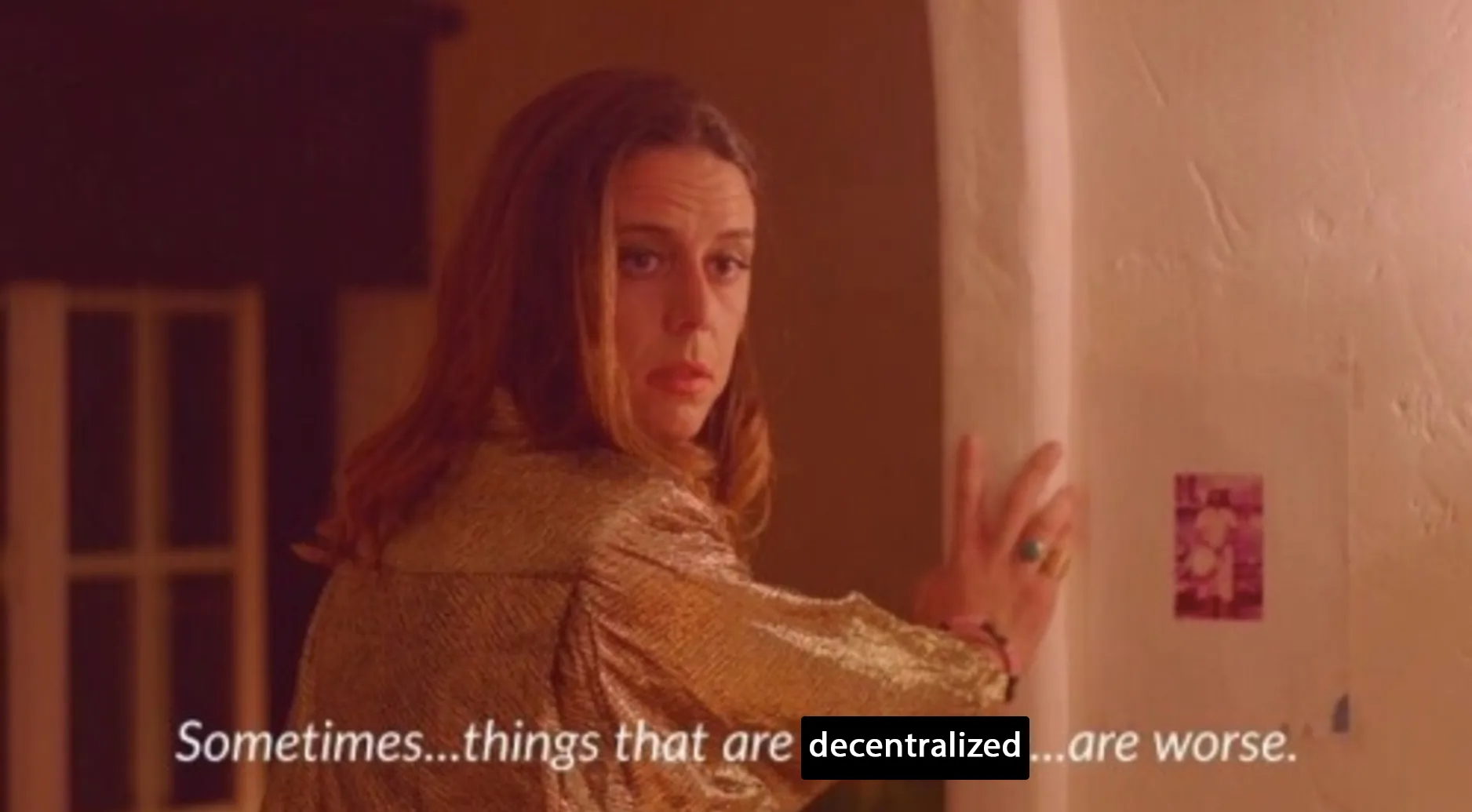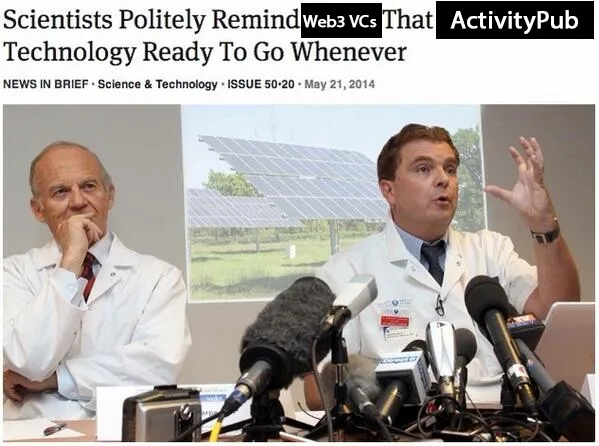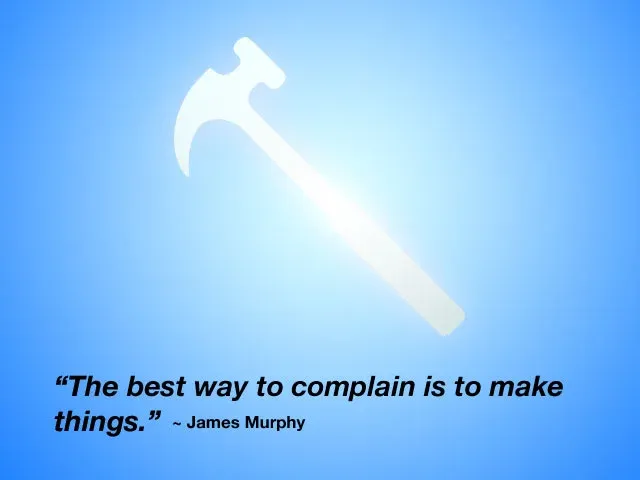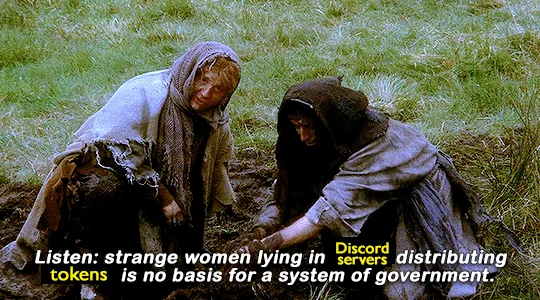The Fight for the Open Web
Table of Contents
It’s hard to have an objective discussion about freedom of the web. Even among allies, “Open Web” means different, sometimes-incompatible things to different people.
For some people, “freedom of the web” is the dismantling of any large center of power, while for others “freedom of the web” means the current institutions have failed, and new ones—preferably led by them—are bound to do significantly better. For some, “freedom of the web” must necessarily pass through large amounts of decentralization, while for others decentralization is a misguided dream that inevitably begets new centralized structures. Even restricting ourselves to Web3 proponents, some believe that “freedom of the web” can only be achieved by moving large swaths of our present infrastructure to the blockchain, while for others NFTs as speculative assets are a smokescreen distracting from token economics as a tool of community governance and grassroot organizing.

See, the problem goes beyond simple “decentralization”. The big question is what should be decentralized, and what decentralization would instead make harder without proportional benefits to the end user. In this essay, I will—
Approaching internet discussions with the understanding that others might use the same words for different concepts is fundamental to their effectiveness—it becomes too easy, otherwise, to pick and choose those we engage with, and single out the most misguided participants as a representation of the whole. When we focus on tearing down points that many of those we’re critiquing would disown, it makes it easier to dismiss valid objections as cherry-picking, and to single out misdirected arguments to escape the underlying points being made. In the end, no matter what freedom of the web means to you, no matter whether you think the blockchain is the road to it or not, it’s important to see either side as comprised of people with different ideals, motivations, and—above all—priorities behind their choices.
Regardless of where any of us stand, however, one thing must be conceded to the Web3 movement: it brought the topic of freedom of the web at forefront of online discussions with an effectiveness previous efforts could only dream of achieving. And now that “the fight for the open web” is here, we must ask ourselves: why did Web3 succeed where previous initiatives failed? And what should those who fight from a different angle do about it?
The Capital Sin of Web3
While different people might see its presence as either a plus or an inherent flaw, it’s important to acknowledge that money is a huge differentiator between classic “freedom of the web” movements and the current “blockchain revolution”. Indeed, one of the drives behind the popularity of Web3 is the dream that, if they use their cards right, new players can right all the wrongs of Web2.0 while still making bank in the process.
The reason any discussion must start by pointing this out is that, no matter the relative merits and pitfalls of the underlying technological stacks, the dynamics introduced by large cash flows inevitably shape the outcome of any movement: money makes it easier to attract talent to a mission, and gives even far-fetched, half-assed attempts a shot at either succeeding or teaching others through failure; it focuses people and resources, giving them the economical and emotional space to do the work, while enabling them to overcome their own weaknesses by paying experts for the benefit of their full attention; above all, its presence or lack of it—and, most importantly, its source—influences who gets to lead the change, and inevitably shapes its roadmap. If nothing else, money has a way to make the revolution seem, if not glamorous, a lot easier than it actually is.

To me, if there is one capital (get it? get it?) sin of the mainstream Web3 movement, it’s not—or at least not just—the technology itself, but how it gives even Venture Capitalists and big-tech CEOs (or such wannabes) the chance to roleplay at being revolutionaries without having to concretely weaken their own power. After all, we’ve already been in a very similar place: no one is more dissatisfied with the present state of Web2.0 than the starry-eyed developers who, a decade ago, joined large Silicon Valley companies to “change the world”. Indeed, when we point out the danger of using money and large investors as a driver of change, it’s not to sap the revolution, but to stop entrenched powers from once again stealing people’s revolutionary energy for what will turn out to be the Web3 version of selling ads.
The Masters’ Cryptowallets Will Never Dismantle the Masters’ Walled Gardens
While it is tempting—oh, so tempting—to believe you can trick large investors into financing their own demise, it is my personal experience, and the one of others who’ve tried to spearhead “change from the inside”, that institutionalized capital does not reduce the power of institutionalized capital. While the revolutions it finances might weaken the perceived power of entrenched institutions, in the short term, it’s most often a controlled loan that will be yanked away the moment compromise stops being advantageous.
The big lie Venture Capital sells to some Web3 proponents is that embracing the same powers that turned Web2.0 into the present mess will result in a different outcome this time around. While it is true that some of the current dynamics might change for the better, technology on its own cannot guarantee that the resulting ones won’t be significantly worse. Even if big investors truly believed in an idealistic vision of freedom of the web, nothing says this purported dream is the same as ours in the ways that matter. Even further, there is no guarantee the race to freedom will be won by those with the right intentions, and no guarantee their idealistic vision will remain unchanged when the opportunity to extract more profit at its expense inevitably presents itself. After all, as history says, even corporations that start with the stated goal of not being evil are just a press release away from walking back on their principles.
If there is one thing the modern tech landscape teaches us is that, while we can never predict all the large-scale dynamics that what we build will eventually engender, rushing into implementation without continuously questioning how our products could make the world worse is a recipe for disaster. And if this lesson has a corollary, it’s that entrenched powers will pretend to seek—even embrace—warnings and critiques, while failing to implement change on any meaningful level. In many ways, we can turn to historical data to see the writing on the wall: content silos do not simply exist because sharing data is impossible, but because large social media companies have a vested interest to not interoperate; you’re not disallowed from embedding Instagram content into an external feed because it’s technologically impossible, but because their TOS restricts the way its own API (or even simple web scraping) can be used; and companies backed by large amount of capital have often used “doing what’s right for the end user” as a temporary tactic to maximize value extraction after competition has been crushed.

While one should never trust Venture Capital with open protocols, if Web3 were indeed about freedom of the web, we would have seen this shift happen a long time ago.
If we are to lead a revolution, the question is not what happens in the short term, or what happens in the best case scenario. When it comes to freedom of the web, our job—even the one of Web3 supporters—is to practice defensive design and plan not for everything going right, but for everything going wrong.
There Is No Better Time to Fight for a Freer Web
If we don’t believe that Web3 is the right answer, the big question becomes: what should we do about it all? Of course, we can keep pointing out all the ways in which blockchain is not the right technological solution, or all the ways the movement throws away lessons already learned by previous efforts, or twists itself around into places it’s not a natural fit for. I’m not saying we should (all) stop doing that. But whether something is the right solution for a given problem, as anyone that has ever worked for a big corporation will tell you, never quite matters as much as the political dynamics surrounding the choice. Indeed, were that not the case, the web of today wouldn’t be in this position in the first place.
Instead, I want us to recognize that there has never been a better time than the present to actively fight our way towards a freer, more open web. There are many reasons for this: more and more people are entering the tech community from diverse, often under-represented backgrounds, less and less primed to be swallowed by FAANG’s false promises of changing the world; many within these companies—world-class level professionals with far-reaching expertise—have found themselves betrayed by the institutions they helped build, and are itching to fill the void of meaning (and heal the burnout) they’ve been left to contend with; the pandemic has shifted people’s job priorities in a way that’s advantageous to small, socially-driven enterprises; the sustainability of open source and independent software is at the forefront of the discussion, with many working to find viable solutions; at the same time, guidance and resources for bootstrapped enterprises that wish to build away from large capital or within nontraditional organizational structures are now more accessible than ever.
But, above all, the brewing seed for a revolution of the web is the palpable, widespread anger at what corporations have allowed it to become. While arguably still niche, this feeling has expanded to reach far beyond the tech community and encompasses online creatives, internet subcultures, and even simple bystanders. Indeed, if we were to go beyond money, the reason Web3 was able to take hold in the hearts of so many is that it builds upon a real displeasure people feel, one that the older open web movement has failed to effectively build upon.
Given all this, now more than ever, it’s important that we don’t stop at “no blockchain”. Now more than ever, our guiding question should be: “what practical alternative are we going to offer?”

from indieweb.org
If we believe in the technologies that already exist, we must use them to take concrete steps towards our own version of the future.
The Best Way to Fight Is to Build
This is not to say that people haven’t already been working in this area. Since becoming interested in open, decentralized technologies—thank you, 2018 Tumblr porn ban, for precipitating my radicalization—I’ve interacted with many that are tired and angry at the present status quo of the web. The landscape is, as one can imagine, extremely varied: some groups roleplay doing the web like it’s 2001, eschewing the complexity of the modern software stack in favor of good ol’ hand-written HTML; others form community around tending to their own gardens, implementing decentralized protocols within their own projects, with no stated roadmap or strategy for large-scale adoption; and many plug software together for their own pleasure, with no intention of making the results available to a casual, non-technical public.
None of this is meant as a critique: in a world were value is too often equated with productivity, building software for fun rather than for business is an anti-capitalist action worthy of protection. But, just like it’s important for the Web3 movement to acknowledge that the barriers to a decentralized, open web go far beyond the lack of technological solutions, it’s important for us to also understand that what Web3 is offering goes far beyond blockchain as a technology. When you scratch below the surface, Web3 is a welcoming, bustling community of individuals that create organizations (no matter how flawed) to try and bring about real, effective change; it’s a plethora of resources for beginners, of “getting started”s, and “how to”s, and Discord servers where questions can be asked and connections can be forged; it’s discussions about what the future should look like, paired with real energy that spurs people into action; it’s the dream that, when they pool their talent, resources—and, yes, money—together, individuals have the power to effectively build a new web away from institutionalized powers. Like many things, Web3 has invented none of this, and yet is doing it more effectively than previous movements ever have.
In the end, harder to use, more confusing, less stable versions of what’s already out there will never be a viable strategy for long-term change. And while Web3 also struggles with the complexities of decentralized software, it’s not just selling it as a nerdy alternative to the mainstream, but as an exciting problem to solve at scale. By organizing themselves in DAOs, and by embracing token economies, many Web3 projects recognize that individual work cannot meaningfully move the needle without a coordinated effort, a roadmap, a mission, and the willingness to do what it takes to bring the future to a larger public. And, while I believe that the ability to pay for your right to vote on a roadmap is not what will unlock the web I want to see, not taking our own revolution seriously will all but ensure that others get to build it in our place.

While I’m personally not sold on token economics, DAOs are an interesting space to observe as they experiment with new structures for online organizing.
If we care about freedom of the web, we need to get serious about building the web we want to see. We must envision and create delightful software, based on existing open protocols, that people want to use not just because it aligns with their ideals, but because it delivers them real value. We need to offer open, ethical alternatives to the status quo that are both sustainable and useful, and we must do the hard work of marketing and selling them to those primed to receive them. We must build business models that allow us to pay people fairly for their expertise, that recognize that lasting change shouldn’t be built in people’s spare time, and that modern software requires people’s full attention—not just of engineers, but of product managers, designers, admins, QA testers, lawyers, artists, tech writers, marketers, moderators, community managers, support specialists, and countless others. At the same time, the organizations we create must be built to be resilient against both external and internal attempts at thwarting their mission for the sake of profits (an aspiration that inevitably closes down many traditional fundraising avenues), and must ensure they do not centralize power within themselves, or grow large enough to swallow each other.
All of this is anything but simple. But as long as we don’t take building the future seriously, giving ourselves a real chance at achieving a different web at scale—not a huge one, but an impactful one—those with goals and ambitions incompatible with ours will continue to dominate the narrative. More and more bootstrapped, open source, profitable software based on closed protocols is launched every day; more and more existing problems are solved with blockchain technology, even when unneeded; those of us that believe in open standards also have the power to build products and companies that spearhead the principles we ourselves believe in. Because, while it’s true that the future of the independent web will never be built by those who are doing it for money, it also won’t be built by those who treat it as a hobby.
Conclusion & Action Items
Far from being the end of the story, the Web3 movement is an opportunity for those that stand in opposition to it: if we truly believe the blockchain is nothing but a fad, if we’re sure that people will eventually wise-up and realize the promises they’re being sold are bound not to materialize (or at least not in the way being advertised), then the eventual crash and burn is a welcome chance—not to gloat, but to fill a void. While it might not align with our own vision of the future, Web3 buys us the time to plan and strategize, doing the important job of sensitizing public opinion on our behalf, while leaving us space to build communities and software able to welcome those willing to go beyond the short-term hype.
And while I don’t have all the answers (the right ones will take time, effort, and a lot of trials and errors), here are some potential actions to take:
- Offer your expertise to those building towards the future you believe in. Make yourself available within the limits of your possibilities, connect people with experts in your network.
- Create welcoming spaces (for both beginners and not) to ask questions. Build communities, or help expanding existing ones.
- Identify the largest roadblocks in the way of the future you want to see, and write about topics you’re familiar with in ways that are both useful and accessible.
- If it’s within your means, pay for the indie software you use. Sponsor projects that uphold your values, and recommend them to others. Be a cheerleader. Understand that redirecting your finances towards those enacting change is as effective as—or even more than—volunteering your time.
- Help raising funds for causes you believe in. Create new ones. If you know about avenues of sustainable financing, help connecting them with those spearheading the changes you want to see.
- Build your projects in public. Build a public.
- Start small. Do not rush into solving every problem. If you wish to build utilities or products that encourage the adoption of open technologies, learn how to do so effectively. Learn about MVPs, product-market fit, ethical entrepreneurship, and how to prioritize your work to effectively serve the communities you wish to build for. Learn from the mistake and successes of those who have built similar products in the past, even when the ethos of those products does not align with yours.
- Explore different avenues of funding, and identify those best aligned with your goals. Don’t be afraid to ask for money for the services you provide, but don’t let money overrule your principles.
- Learn about different types of organizations (e.g. nonprofits, co-ops, and anarchist collectives), but don’t wait to have built complex structures before starting to do the work. If you’ve led such organizations, offer your expertise and guidance to those that are just beginning to.
- Imagine a better future, and tell everyone about it. Start conversations.
- Believe that change is possible, and that you have the power to bring it forwards. Help others believe the same.
And last, especially if you’re a Web3 supporter that has made it to this point, understand that freedom of the web goes beyond a single technology or answer. But above all, understand that a free web won’t be built with money at its center, but on top of the connections it’s uniquely suited to create.
Parting Words
…and with this, it’s time for the extra stuff! As usual, please, do let me know your thoughts on any of my social accounts, my email, or on the anonymous feedback form. If you’d like to offer your expertise to BobaBoard, you can fill the tech & non-tech volunteer forms! I’ll start reaching out again in the new year.
I also want to thank Irene Knapp (Irenes) for being a guiding light during the writing of this article, and to apologize to all the people that are tired of my Web3 rants. I’ve—finally!—said my piece.
If you’d like to encourage more discussion, you can share this article on Twitter!
Chapter End Ranking
Hours Budgeted: 8
Hours Used: …6 drafts * ~5-6hrs each = …yeah…
Rank:

Yes, I’m still doing the 8 hours thing. No, it’s not going great.